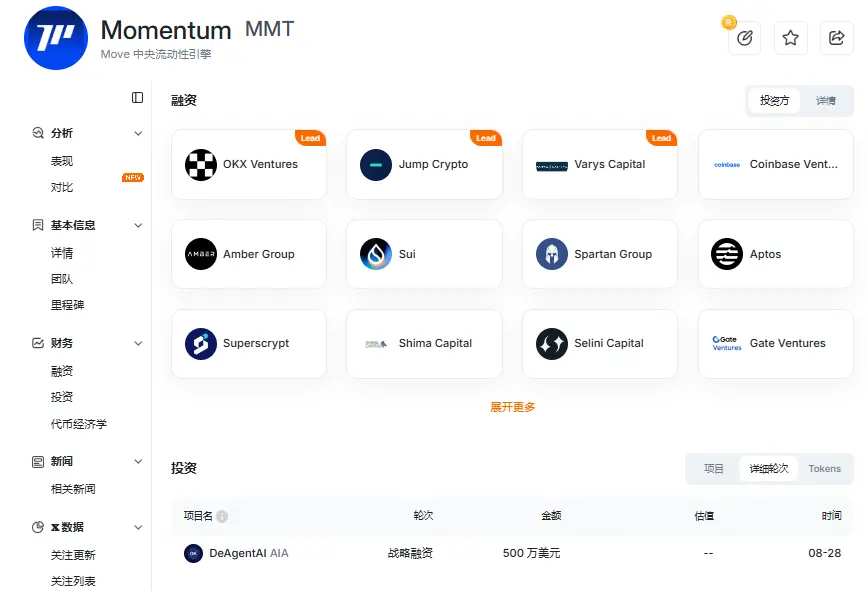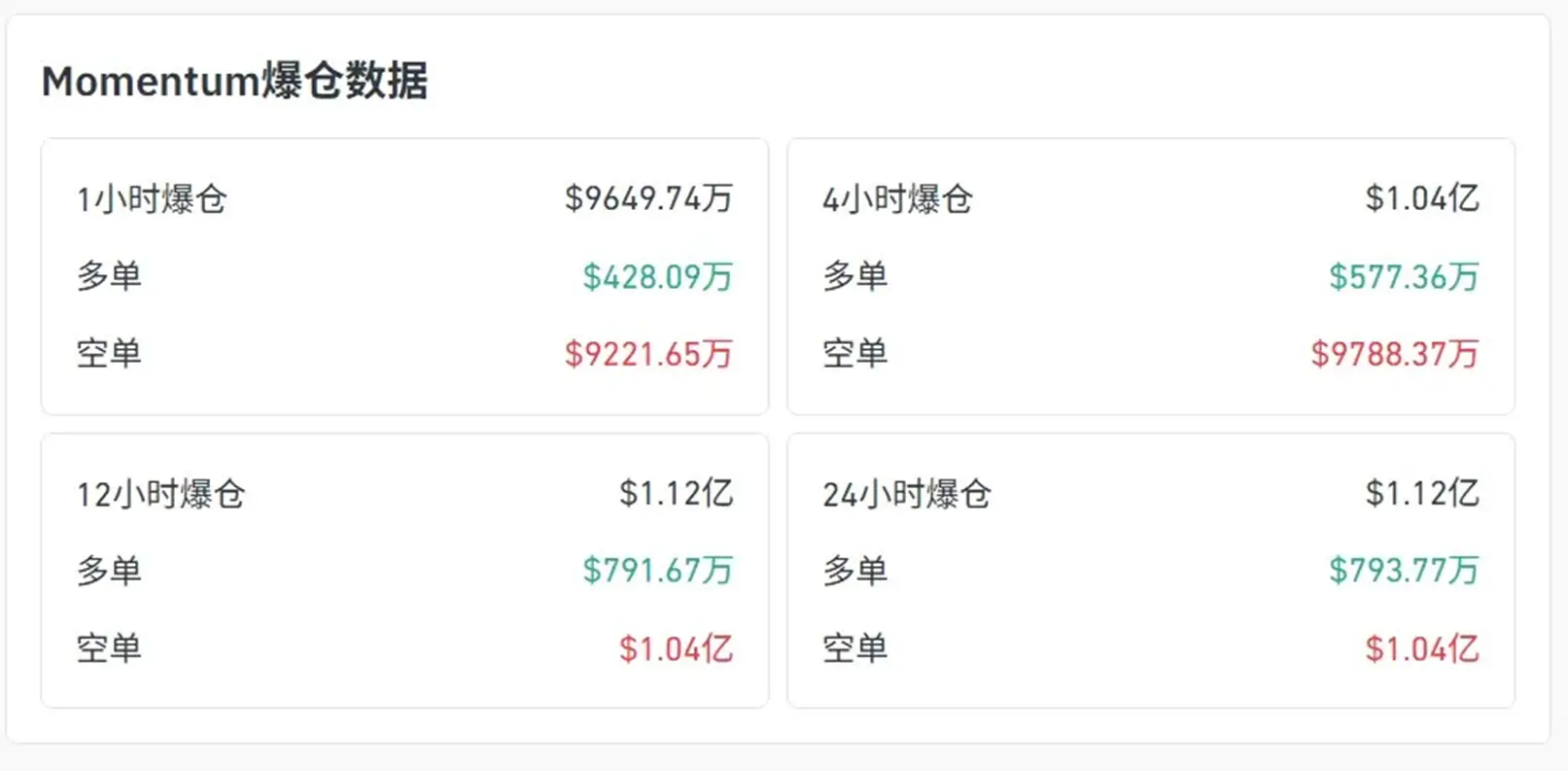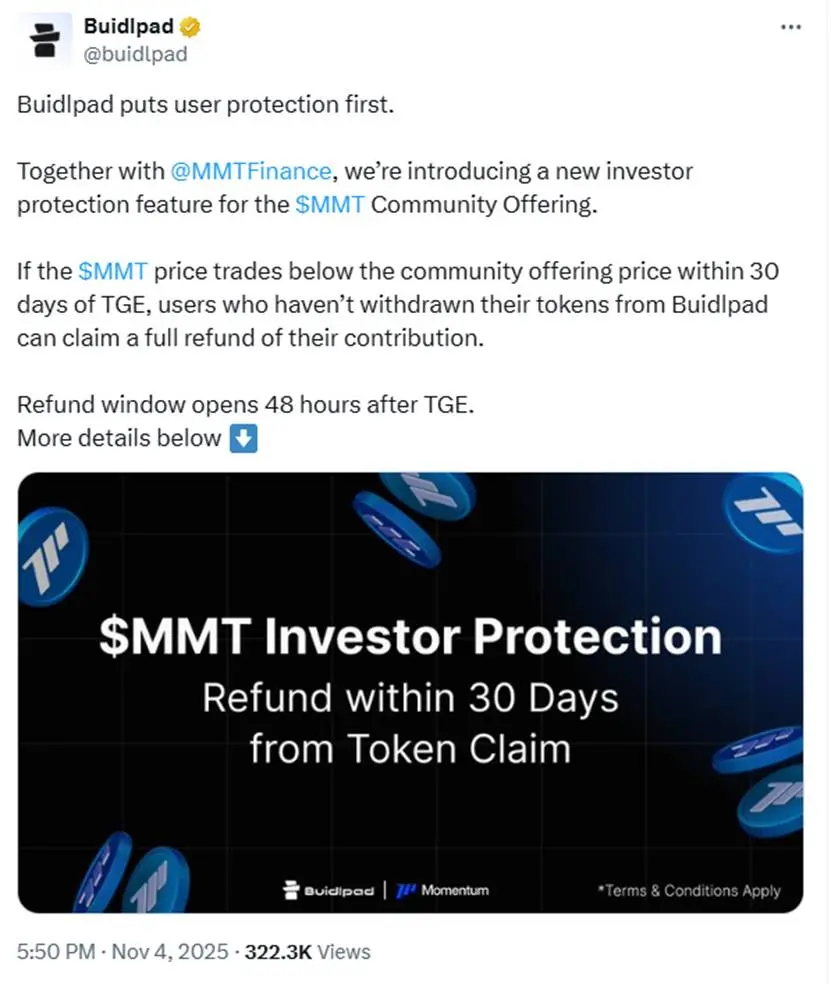Author: zhou, ChainCatcher
The MMT short squeeze event has passed for four days, and the market's aftershocks have yet to subside. The KOLs who once loudly promoted the potential of MMT have also not escaped the fate of being taught a lesson by the market. As of today, the full picture of the event is gradually becoming clear, from hype and attracting new users, pre-market warning of price drop, to a wild surge in short positions, followed by a crash that wiped out long positions. This collapse not only burst the speculative bubble but also exposed deep-seated issues of manipulation and trust crisis within the industry.

Image source: X user @cloakmk
It is reported that Momentum is a leading centralized liquidity market maker (CLMM) DEX on the Sui network, attracting widespread attention with its Uniswap v3-style architecture and highly efficient trading mechanism. According to information from Rootdata, Momentum has received investments from institutions such as OKX Ventures, Jump Crypto, Varys Capital, Coinbase Ventures, Amber Group, and Sui, and participated in a $5 million strategic financing for DeAgentAI (AIA) in August this year.

Since the beta version launched in March 2025, Momentum has accumulated over 2 million independent trading users, with a total trading volume exceeding $18 billion and a total value locked (TVL) surpassing $500 million. These impressive achievements once led the market to have high hopes for it, but also buried hidden dangers for subsequent turmoil.
In October 2025, Momentum Finance launched a community subscription for the MMT token through the Buidlpad platform, with a planned total fundraising amount set at $4.5 million. The primary valuation was set at $250 million, benefiting users who qualified for staking through the Buidlpad HODL or Wagmi activities; the secondary valuation was set at $350 million, aimed at other qualified participants. Subscription amounts ranged from $50 to $2,000, with some users qualifying through staking or activities able to reach up to $20,000.
Additionally, users who staked over $3,000 through the Buidlpad HODL activity before October 25 could enjoy primary pricing and increase their contribution limit to between $3,000 and $20,000; long-term community members participating in Wagmi 1 and Wagmi 2 could receive primary valuation without needing to stake; content creators submitting original content for the Momentum ecosystem could also receive additional priority quotas of over $150. This low-threshold, high-incentive subscription design quickly ignited enthusiasm among retail investors and KOLs.
On November 4, the day of the TGE, during pre-market trading on the Bybit platform, the MMT price opened low at $0.3, below the ICO cost of $0.35 for most retail investors, clearly showing a trend of price drop, prompting many investors to choose to short hedge, attempting to lock in profits through shorting; after the official opening, the spot and contract prices of MMT briefly surged to $0.8, this short-lived increase aligned with the usual pattern of new coins being listed, which typically sees a rise followed by a drop, thus shorting after the surge was seen as a reasonable operation, attracting more people to join the short camp.
However, the situation began to change the next day. Between midnight and 5 AM on November 5, the MMT price surged several times, quickly climbing from a low to $6.47 (Binance contract), and even reaching $10.5 on Bybit. This dramatic surge precisely triggered a short squeeze, with the scale of short liquidations exceeding $100 million in a short time.
 Subsequently, the MMT price sharply fell from its peak to below $1, with a retracement of over 80%. According to Suiscan data, an address associated with the Momentum team, 0xe7cd…7a88a4, transferred 38 million MMT tokens to Binance, valued at approximately $45.6 million. This batch of tokens came from the second-largest holding address, 0x1b4d2…7355c8, which holds 18.57% of the total MMT supply, and this sell-off triggered panic in the market.
Subsequently, the MMT price sharply fell from its peak to below $1, with a retracement of over 80%. According to Suiscan data, an address associated with the Momentum team, 0xe7cd…7a88a4, transferred 38 million MMT tokens to Binance, valued at approximately $45.6 million. This batch of tokens came from the second-largest holding address, 0x1b4d2…7355c8, which holds 18.57% of the total MMT supply, and this sell-off triggered panic in the market.

The operation's pattern seems familiar, and the community speculates that there may be collusion between insiders at the exchange and market makers behind this event. Well-known crypto KOL Crypto Fearless analyzed that this MMT short squeeze, besides the project party cooperating with market makers to delay airdrop distribution and the sudden surge in the middle of the night, also has more hidden insider information: insiders at the exchange shared the position information of large short holders with market makers, allowing them to accurately trigger the short squeeze. This is reminiscent of similar cases exposed by Spartan Group in 2023, further shaking industry trust.

For KOLs and retail investors participating in the new token launch, they originally obtained airdropped tokens and priority quotas through promotion, but due to high leverage operations and severe market fluctuations, they faced liquidation. A typical example is trader @Elizabethofyou, whose hedge amount of $7,000 ultimately resulted in a loss of $130,000, with a liquidation price of $6.85; she stated that her hedge on Bybit was liquidated at a targeted price, and Bybit responded that they are following up on the matter.
Looking back at this event, the previous active promotion by KOLs laid a deep foundation for the MMT short squeeze. They created extremely high market expectations through social media and content creation, attracting a large number of retail investors to participate, and the previous profit-making effect of several projects on the Buidlpad platform further boosted investor confidence. It is worth mentioning that Buidlpad had previously announced a price protection mechanism, promising that if MMT fell below the community issuance price within 30 days after the TGE, users who had not withdrawn their tokens could apply for a full refund.

Theoretically, if no shorting occurred, the new token investors could have avoided losses. However, the low opening price on Bybit pre-market directly triggered expectations of a price drop, prompting investors to emotionally open short hedges. The project party successfully converted investors' funds into their own profits through delayed unlocks and a dramatic surge in the early morning; the sale of 38 million tokens further exposed the project party's short-term profit intentions.
Currently, the MMT price hovers around $0.6, down about 85% from its peak, and the future trend still depends on the movement of the remaining tokens held by the team. Notably, starting from noon yesterday, the DeAgentAI token AIA, invested by Momentum, suddenly surged, achieving an astonishing tenfold increase within a day. Previously, AIA had also precisely triggered the liquidation of hedging investors using similar manipulation tactics, raising alarms about the signs of history repeating itself.
For investors, this turmoil undoubtedly serves as another wake-up call: even when hedging through shorting, and even when being bearish on a project, it is necessary to control the potential risks in contract trading, and in abnormal trading environments, it is even more crucial to use tools like stop-loss orders and adjust margins; otherwise, one will eventually suffer painful lessons from the market. In a market environment where regulation is not yet perfected, similar events may become the norm.
Click to learn about job openings at ChainCatcher
免责声明:本文章仅代表作者个人观点,不代表本平台的立场和观点。本文章仅供信息分享,不构成对任何人的任何投资建议。用户与作者之间的任何争议,与本平台无关。如网页中刊载的文章或图片涉及侵权,请提供相关的权利证明和身份证明发送邮件到support@aicoin.com,本平台相关工作人员将会进行核查。




